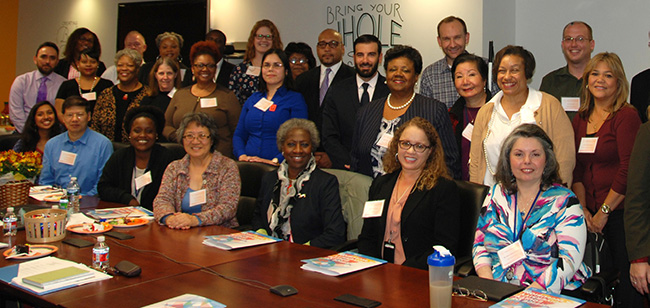
In all the time you’ve worked at the National Institutes of Health (NIH), did you ever hear about NIH Employee Resource Groups (ERGs) and what they can do for you?
If not, don’t worry because we’re here to give you the full scoop.
Employee resource groups are also known as ERGs, affinity groups, or business network groups. ERGs provide excellent opportunities to promote diversity and inclusion and to ensure that the range of perspectives and experiences of all members of the organization are valued.
ERGs are defined as voluntary groups which are led by members of the organization; formed around common interests. ERGs serve as a resource for members and organizations by fostering inclusive and affirming spaces for diverse communities. ERGs brings many benefits to the entire organization, benefits such as helping to provide safe spaces to build connections, welcoming new members, promoting the agency’s recruitment and retention efforts, helping create engagement, and promoting an inclusive work environment. Some ERGs also provide developmental opportunities where members can gain valuable skills and experiences in mentoring, leadership, and professional development.
ERGs are an avenue to meet, share information with, and collaborate with and among other professionals at NIH, including those from diverse backgrounds. At the NIH, these groups may consist of employees and non-employees such as fellows, registered volunteers, and contractors, as long as participation in ERG activities is legally permissible and authorized by the appropriate supervisor, or program manager. Some researchers at NIH are amazed to learn that ERGs allow them to meet others across campus who are similar – or different – demographically and that they otherwise might not meet, but are nonetheless working on similar or complementary research efforts.
Supervisors and recruiters at NIH looking for diverse talent to add to your teams can also reach out to ERGs to help get the word out about opportunities. Given diverse groups achieve optimal solutions, it’s a good business decision for NIH and management.
Throughout HHS OPDIVs, there are several ERGs identified by HHS EEO and D&I Offices, including groups such as Federally Employed Women (FEW), Blacks In Government (BIG), Federal Asian Pacific American Council (FAPAC) , Gay, Lesbian, Bisexual Transgender Employees of the Federal Government (GLOBE), Hispanic Employee Organization (HEO), Veterans, and Returned Peace Corps Volunteers (RPCV).
The NIH Office of Equity Diversity and Inclusion (EDI) and the Office of Scientific Workforce Diversity (SWD) are interested in developing a community of practice supportive of ERGs that are aligned in building an equitable and inclusive workplace. Since the initial meeting with ERGs last Nov 1st, 2016 EDI has established a LISTSERV and a SharePoint site for ERGs leaders to facilitate communication among groups, exchange best practices, share news of interest to all ERGs, and submit activities that are open to the entire NIH community. At quarterly meetings, ERG leaders are sharing their best practices and are seeking opportunities to work collaboratively in projects of mutual interest. If you are an ERG leader and would like to be part of the EDI SWD collaboration you may send your request to: edi.people@nih.gov or, join us for the upcoming ERG collaboration meeting on Tuesday, September 12, 2017 at 1:00 PM - 2:30 PM at NIH Building 45, Natcher Conference Center, room E1/E2. You can also join by phone reaching 1 (650) 479-3208.
Do you have a story idea for us? Do you want to submit a guest blog? If it's about equity, diversity, or inclusion, please submit to edi.stories@nih.gov.
For news, updates, and videos, follow or subscribe to EDI on: Twitter, Instagram, Blog, YouTube.






